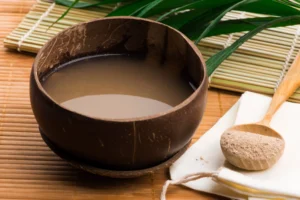Kava and Kratom are two natural substances that have gained popularity in recent years due to their medicinal and recreational properties. While they share some similarities, they differ in several ways, including their origin, chemical composition, effects, legality, and potential side effects.
Kava is derived from the root of the Piper methysticum plant, which is native to the Pacific Islands. The root is harvested, dried, and pounded into a powder or chewed. Kava is known for its calming and relaxing effects, making it an excellent natural remedy for anxiety, stress, and sleep disorders. It can also promote sleep and alleviate muscle tension. Kava contains kavalactones, which are responsible for its relaxing and calming effects. These compounds are not addictive and do not cause respiratory depression.
Kratom, on the other hand, is derived from the leaves of the Mitragyna speciosa tree, which is native to Southeast Asia. The leaves are harvested, dried, and either chewed or ground into a powder. Kratom is known for its pain-relieving and energizing effects, making it an excellent natural remedy for managing chronic pain, boosting energy levels, and enhancing mood. Kratom contains alkaloids, including mitragynine and 7-hydroxymitragynine, which are responsible for its pain-relieving and stimulating effects. These alkaloids are not addictive when consumed in moderate amounts and do not cause liver toxicity.

Kava and Kratom are both natural substances
In terms of legality, Kava is legal for consumption in most countries, including the United States. Kratom is legal for consumption in most states in the US, although it is regulated or restricted in some states. It is important to note that the legality of Kava and Kratom varies by country and state, so it is essential to research the laws in your area before consuming either substance.
Both Kava and Kratom have potential side effects, although they differ in nature and severity. Kava can cause mild side effects such as nausea, headaches, and dizziness, but it is generally safe when consumed in moderation. In rare cases, Kava has been associated with liver toxicity, especially when consumed in excessive amounts or for prolonged periods. It is important to note that Kava is not recommended for people with liver problems or those who consume alcohol regularly. Kratom can cause mild side effects such as constipation, nausea, and vomiting, but it is generally safe when consumed in moderation. In high doses or when consumed for prolonged periods, Kratom can cause severe side effects, including respiratory depression, seizures, and addiction. It is essential to consume Kratom responsibly and not exceed the recommended dosage.
While both Kava and Kratom have potential side effects, they also offer several positive effects when used responsibly. Kava is an excellent natural remedy for anxiety, stress, and sleep disorders, and it can promote relaxation and alleviate muscle tension. Kratom is an excellent natural remedy for managing chronic pain, boosting energy levels, and enhancing mood.




